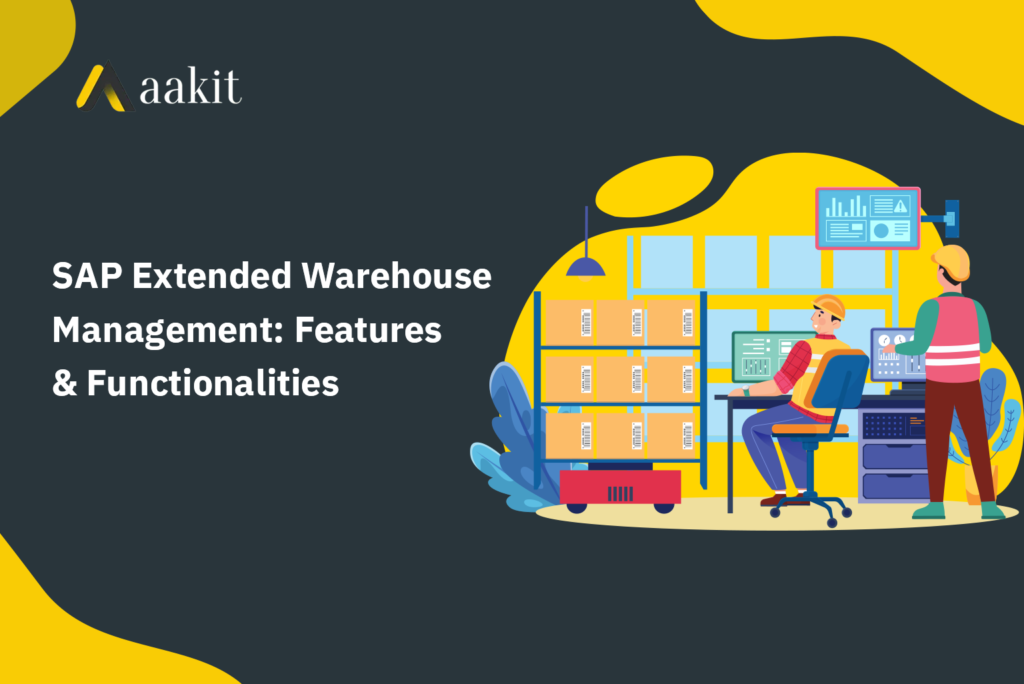
With time, businesses have evolved from mere trade of goods to large-scale distribution, including manufacture. Simple storage solutions are a thing of the past.
Today, businesses with high-volume warehouse operations rely heavily on storage and complex supply chain logistics. Modern warehouses of any large-scale business are equipped with technology that offers enhanced visibility into the entire inventory and facilitates supply chain fulfillment operations.
Warehousing is vital in the whole supply chain management (SCM) process. It streamlines the supply chain and improves the efficiency of warehouse operations.
However, warehouse management is a tedious process involving overwhelming data and is significantly time-consuming without a proper support system. This calls for an effective warehouse management system or a software solution like SAP Extended Warehouse Management (EWM) for optimizing fulfillment capabilities. Let’s now understand in depth about SAP EWM.
Why go for SAP EWM?
Modern-day businesses heavily depend on software solutions that manage the voluminous transaction of goods and services. SAP is software that perfectly aligns with the needs of small and large-scale businesses to address the complex supply chain management process.
SAP Extended Warehouse Management (EWM) provides services like inbound and outbound operations, workforce management, and efficient control of warehouse apparatus on the cloud or physically. Over the years, SAP has been the leading name in supply chain management. It has developed a more advanced, efficient, and convenient way of warehouse management with SAP EWM. The existing model of SAP WM will cease to exist by 2025, and the new SAP EWM will be a game-changer in logistical operations. Let us navigate through the intricacies of warehouse management and the boost SAP EWM offers.
Challenges in warehouse management and how SAP EWM helps
From 2015 to 2021, at least 80% of businesses reported using a warehouse management system, which confirms its importance. But there’s another side to the story – companies worldwide spend an estimated $350 billion yearly on warehousing costs, which doesn’t include the additional costs associated with combating errors and challenges. The expenses continue to rise as global supply chain operations become more complex.
Look at the top warehouse management challenges businesses face and how SAP EWM helps:
- Inventory tracking and accuracy
Warehouses store a substantial amount of goods in different locations. Inaccurate information about inventory leads to time and resource wastage. SAP EWM strives to achieve streamlined transportation of goods.
- Warehouse layout and poor storage
Poor layout of the warehouse results in storage issues. To avoid this, SAP EWM employs layout-oriented storage control.
Numbers and responsibilities in a warehouse-oriented business can be overwhelming, especially with poor planning. SAP EWM plans and manages the inbound and outbound goods by a role-specific interface.
Labor optimization may often be overlooked due to the sheer volume of goods and a large workforce. Optimal labor distribution is one of the significant updates in SAP EWM that identifies the people required for the smooth flow of events.
SAP Warehouse Management (WM) vs. SAP Extended Warehouse Management (EWM)
SAP WM was introduced in the late 1970s and has stood like a rock for medium and large-scale businesses. In 2015, SAP EWM was released to provide more extensive services for warehouse management. Since then, there have been constant upgrades to provide a more holistic approach to SCM and achieve new heights in logistical efficiency. However, with the many advancements in the SAP software, it is time for the SAP WM to make way for better SAP EWM.
The new SAP WPM optimizes warehouse management to be more inclusive, extending to labor distribution and facilitating the monitored use of storage bins. Many additional features of SAP EWM make it leagues ahead of its predecessor. The overall impact of this upgrade includes increased inventory accuracy, well-distributed labor, and reduced warehouse costs.
The list below provides insight into the significant differences between SAP WM and the latest version of SAP EWM.
| Services offered | SAP WM | SAP EWM |
| Stock management at storage unit | Yes | Yes |
| Warehouse Bin Management | Yes | Yes |
| Placement and removal strategies | Yes | Yes |
| Storage and handling unit | Yes | Yes |
| Pick logic | Yes | Yes |
| Yard management | Yes | Yes |
| Labour management | Yes | |
| Analytics enablement | Yes | |
| Slotting and re-arrangement | Yes | |
| Deconsolidation | Yes | |
| Loading and unloading of transportation unit | Yes | |
| Task and resource management | Yes | |
| Value Added Services | Yes | |
| SCM, logistics-centric system | Yes |
Key features of SAP EWM
- Inbound processing
- Internal routing and quality management
- Transportation, route management and optimization
- Storage and operations
- Inventory management
- Value added services and kit to stock processing
- Outbound processing
- Transportation, route management and goods management
- Picking, packing and unloading
Functions and processes in SAP EWM
- Inventory Management at storage bin level
SAP EWM works from the basic level of warehouse management. It locates and places the material stock into bins during goods receipt, receives material from the external vendor to the warehouse, and finally receives the finished goods from the production shop into the warehouse.
- Mapping and controlling all goods movements
When the time comes to transport goods from the warehouse, SAP EWM monitors the outbound delivery order until it reaches its recipient.
- Monitoring the processing of goods movement
Having an organized inventory works wonders for a business. SAP EWM efficiently manages storage bins, empties, relocates, and labels them for a trackable inventory layout. This basic yet essential functionality speeds up goods transactions and manages orders efficiently.
What makes SAP EWM different?
As an automated, flexible, and efficient system, SAP has been a pioneer in warehouse management for decades. It has assisted in various logistical aspects and has expanded assistance to multiple aspects of logistics previously untapped by technological support.
The new SAP EWM is a solution for businesses that aim to achieve optimum performance while cutting down on avoidable costs for warehouse management.
SAP EWM is a new-age supply chain management solution that caters to the needs of business warehouse management. The most recent version is assisted by statistical evaluation to manage demands, track business growth, and other capabilities. The overwhelming advantages discussed previously nudges prudent businesses to experience its convenience. SAP EWM is a great way to track the movement of goods and also extends from the traditional warehouse logistics to offer statistically supported accuracy, clarity, and transparency. Optimal work plans result in timely delivery and cost reduction as well.
Conclusion
The new SAP EWM is a boon for businesses that count on efficient warehouse management. This convenient system works on the cloud and on-premise. With an organized database and the support of analytics, it is a gateway to smooth logistical operations. The additional features and functionalities available in SAP EWM are a step toward the new era of warehouse management. It is easier to operate, more convenient, and certainly cost-effective. With the SAP WM system becoming redundant in a few years, it is a wake-up call for businesses to adopt the more advanced solution for logistics. Keep an eye on our website, as we will shortly come up with Part 2 of the blog that will cover the features and functionalities of SAP EWM in detail. For more information, contact us.


